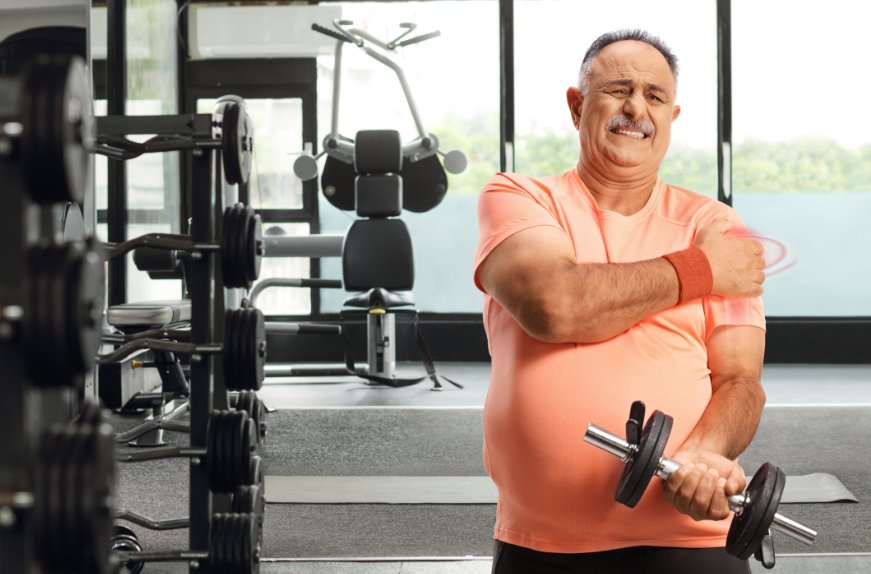 Upper extremity injuries, which encompass damage to the shoulders, arms, elbows, wrists, and hands, are among the most prevalent musculoskeletal issues in daily life. These injuries can originate from various sources, including sports activities, workplace accidents, falls, and repetitive stress. They often result in significant pain, reduced range of motion, and decreased strength, affecting daily tasks such as lifting objects, typing, or even getting dressed.
Upper extremity injuries, which encompass damage to the shoulders, arms, elbows, wrists, and hands, are among the most prevalent musculoskeletal issues in daily life. These injuries can originate from various sources, including sports activities, workplace accidents, falls, and repetitive stress. They often result in significant pain, reduced range of motion, and decreased strength, affecting daily tasks such as lifting objects, typing, or even getting dressed.
Injuries can significantly impact one's ability to perform activities that require upper-body strength and coordination. Additionally, complications such as blood clotting can arise, further hindering recovery and daily functioning. This underscores the importance of timely and effective recovery methods to restore functionality and improve quality of life.
For patients dealing with upper extremity injuries, Dr. Spiess at Pittsburgh Hand and Nerve offers expert care to aid in their recovery journey.
What is PRP Therapy?
Platelet-rich plasma (PRP) therapy is a medical treatment designed to accelerate the healing of injured tissues by using concentrated platelets from the patient’s own blood. These platelets contain growth factors that help rejuvenate and repair damaged tissues, making PRP particularly effective for soft tissue injuries, chronic conditions, and even hair restoration.
To prepare PRP, a small amount of the patient’s blood, typically drawn from the arm, is placed in a centrifuge. This device spins at high speed to separate the blood components, including red blood cells, into different layers. The platelets are concentrated into a plasma layer, which is then extracted and prepared for injection. This PRP solution is subsequently injected directly into the site of injury or areas of hair loss, promoting the natural healing process by stimulating cell growth and tissue repair. This makes PRP a promising option for those looking to address hair loss and encourage hair growth.
Causes of Upper Extremity Injuries
Upper extremity injuries can arise from a multitude of causes, including:
- Overuse or repetitive stress (e.g., typing, playing musical instruments, engaging in sports like tennis or baseball)
- Sports injuries (e.g., fractures, sprains, dislocations from high-impact or high-stress activities)
- Workplace accidents (e.g., manual labor, heavy lifting leading to acute injuries such as strains, sprains, nerve damage)
- Falls (e.g., broken bones, dislocations, ligament tears from falls from a height or simple slips)
- Degenerative conditions (e.g., arthritis leading to pain and reduced mobility)
- Medical conditions or congenital issues (predisposing individuals to musculoskeletal injuries)
PRP for Upper Extremity Injuries
PRP therapy, or platelet-rich plasma injection, is a promising treatment for various upper extremity injuries, accelerating the natural healing process. This section highlights injuries that benefit from PRP therapy, detailing how it enhances recovery and patient outcomes.
- Tendinitis: It reduces inflammation and promotes tendon tissue regeneration, accelerating healing and reducing pain.
- Ligament Injuries: It supplies growth factors that stimulate ligament fiber regeneration, leading to faster recovery and improved joint stability.
- Rotator Cuff Injuries: It mitigates inflammation and supports tissue healing, reducing pain and restoring shoulder function.
- Tennis Elbow (Lateral Epicondylitis): It promotes tissue repair and modulates inflammation, speeding up recovery and decreasing discomfort.
- Carpal Tunnel Syndrome: Growth factors in PRP reduce inflammation and promote nerve healing, relieving symptoms like pain, tingling, and numbness.
- Wrist Sprains: It enhances cellular repair and reduces inflammation, leading to quicker rehabilitation and less pain.
- Shoulder Impingement Syndrome: PRP reduces inflammation and promotes healing of compressed tissues, restoring function and alleviating discomfort.
Additionally, PRP aids in the repair and regeneration of muscle tissues by speeding up healing, reducing inflammation, and restoring function. By administering concentrated platelets directly into the injured area, PRP therapy boosts the natural healing process, reducing pain and speeding up recovery. This method not only targets the injured tissues but also minimizes inflammation, leading to quicker rehabilitation.
What to Expect During Recovery
Recovery after PRP treatment varies depending on injury severity and individual healing responses. Typically, noticeable improvements occur within a few weeks, with significant progress in two to three months. Acute injuries may heal faster than chronic ones. Key recovery tips include avoiding strenuous activities, using braces or splints, gradually returning to exercise, engaging in a customized physical therapy program, maintaining a balanced diet, and staying hydrated. The PRP process leverages a blood cell to promote healing, and the formation of a blood clot at the injury site can aid in recovery. Following these guidelines can enhance its effectiveness and promote smoother recovery.
Reclaim Your Mobility, Relieve Your Pain
At Pittsburgh Hand and Nerve, addressing your upper extremity injuries is our priority. Under the expert care of Dr. Spiess, a renowned specialist in hand and nerve disorders, you can be assured of receiving the highest standard of treatment. Don't let pain and restricted mobility hold you back any longer.
Schedule an appointment today to explore how PRP therapy can help you overcome upper extremity injuries and get back to living life to the fullest.
